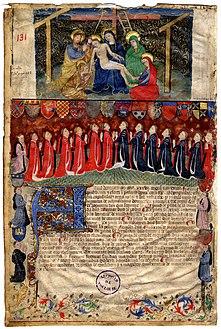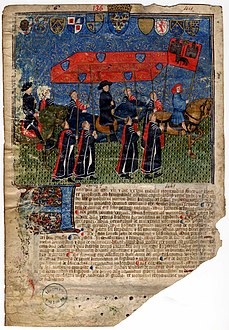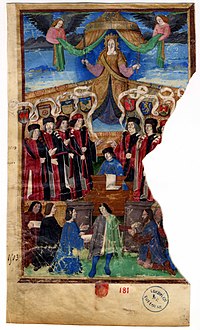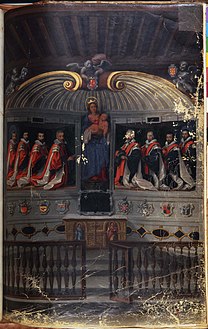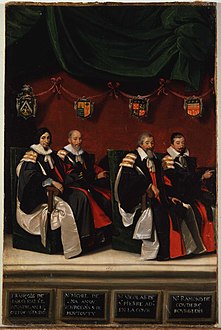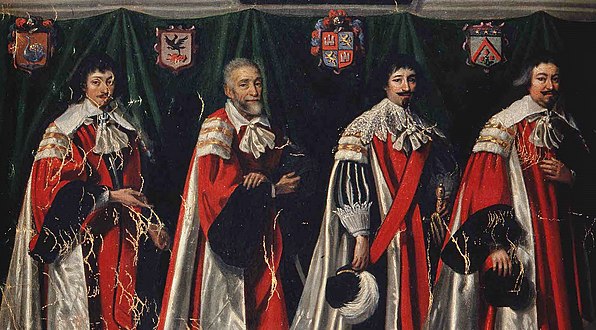Consul was the title of one of the two chief magistrates of the Roman Republic, and subsequently also an important title under the Roman Empire. The title was used in other European city-states through antiquity and the Middle Ages, in particular in the Republics of Genoa and Pisa, then revived in modern states, notably in the First French Republic. The related adjective is consular, from the Latin consularis.

Toulouse is the prefecture of the French department of Haute-Garonne and of the larger region of Occitania. The city is on the banks of the River Garonne, 150 kilometres from the Mediterranean Sea, 230 km (143 mi) from the Atlantic Ocean and 680 km (420 mi) from Paris. It is the fourth-largest city in France after Paris, Marseille and Lyon, with 500,000 inhabitants within its municipal boundaries ; its metropolitan area has a population of 1.5 million inhabitants. Toulouse is the central city of one of the 22 metropolitan councils of France. Between the 2014 and 2020 censuses, its metropolitan area was the third fastest growing among metropolitan areas larger than 500,000 inhabitants in France.

The County of Toulouse was a territory in southern France consisting of the city of Toulouse and its environs, ruled by the Count of Toulouse from the late 9th century until the late 13th century.
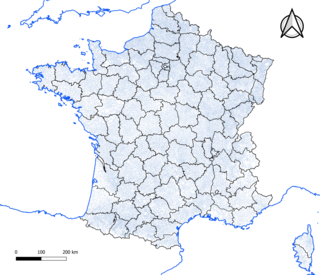
The commune is a level of administrative division in the French Republic. French communes are analogous to civil townships and incorporated municipalities in the United States and Canada, Gemeinden in Germany, comuni in Italy, or municipios in Spain. The UK equivalent are civil parishes. Communes are based on historical geographic communities or villages and are vested with significant powers to manage the populations and land of the geographic area covered. The communes are the fourth-level administrative divisions of France.

Stade Toulousain, also referred to as Toulouse, is a professional rugby union club based in Toulouse, France. They compete in the Top 14, France's top division of rugby, and the European Rugby Champions Cup.

Millau is a commune in Occitania, France. Located at the confluence of the Tarn and Dourbie rivers, the town is a subprefecture of the Aveyron department.

JeanFouquet was a French painter and miniaturist. A master of panel painting and manuscript illumination, and the apparent inventor of the portrait miniature, he is considered one of the most important painters from the period between the late Gothic and early Renaissance. He was the first French artist to travel to Italy and experience first-hand the early Italian Renaissance.
The history of Toulouse, in Occitania, southern France, traces back to ancient times. After Roman rule, the city was ruled by the Visigoths and Merovingian and Carolingian Franks. Capital of the County of Toulouse during the Middle Ages, today it is the capital of the Midi-Pyrénées region.
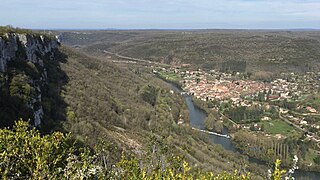
Saint-Antonin-Noble-Val is a commune in the Tarn-et-Garonne department in the Occitanie region in southern France.

Muret is a commune in the Haute-Garonne department, of which it is a subprefecture, in the Occitanie region of southwestern France. Its inhabitants are called Muretains.

The Parlement of Toulouse was one of the parlements of the Kingdom of France, established in the city of Toulouse. It was modelled on the Parlement of Paris. It was first created in 1420, but definitely established by edicts in 1437 and 1443 by Charles VII as an appellate court of justice on civil, criminal and ecclesiastic affairs for the Languedoc region, including Quercy, the County of Foix and Armagnac. It was the first provincial parlement, intended to administer the Occitan-speaking south of France, and it gained in prestige both by its distance from Paris and from the differences between southern France's legal system and northern France's.

The Capitole de Toulouse, commonly known as the Capitole, is the heart of the municipal administration and the city hall of the French city of Toulouse.
Events from the year 1643 in art.
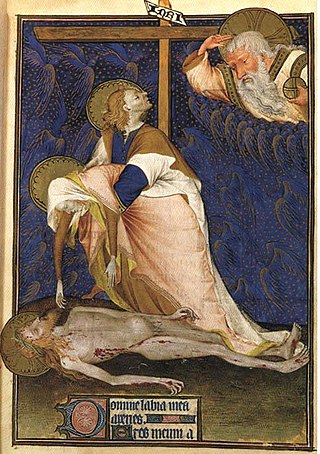
The Grandes Heures de Rohan is an illuminated manuscript book of hours, painted by the anonymous artist known as the Rohan Master, probably between 1418 and 1425, in the Gothic style. It contains the usual offices, prayers and litanies in Latin, along with supplemental texts, decorated with 11 full page, 54 half page, and 227 small miniatures, decorated with tempera paints and gold leaf. The book margins are decorated with Old Testament miniatures with captions in Old French, in the style of a Bible moralisée. The full page illuminations are renowned for the highly emotional and dramatic portrayal of the agonies of Christ and the grief of the Virgin. According to Millard Meiss, "The Rohan Master cared less about what people do than what they feel. Whereas his great predecessors excelled in the description of the novel aspects of the natural world, he explored the realm of human feeling." Meiss concludes that the Rohan Master was the "greatest expressionist in 15th century France." The manuscript is currently housed in the Bibliothèque Nationale, Paris, France.
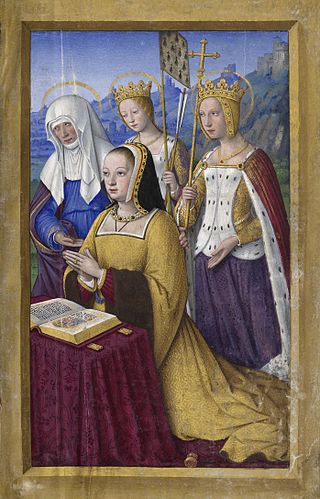
The Grandes Heures of Anne of Brittany is a book of hours, commissioned by Anne of Brittany, Queen of France to two kings in succession, and illuminated in Tours or perhaps Paris by Jean Bourdichon between 1503 and 1508. It has been described by John Harthan as "one of the most magnificent Books of Hours ever made", and is now in the Bibliothèque nationale de France catalogued as Ms lat. 9474. It has 49 full-page miniatures in a Renaissance style, and more than 300 pages have large borders illustrated with a careful depiction of, usually, a single species of plant.

Jean Chalette was a French miniature and portrait painter.

The capitouls, sometimes anglicized as capitols, were the chief magistrates of the commune of Toulouse, France, during the late Middle Ages and early Modern period. Their council and rule was known as the Capitoulate. They were suppressed in 1789 amid the French Revolution.

A presentation miniature or dedication miniature is a miniature painting often found in illuminated manuscripts, in which the patron or donor is presented with a book, normally to be interpreted as the book containing the miniature itself. The miniature is thus symbolic, and presumably represents an event in the future. Usually it is found at the start of the volume, as a frontispiece before the main text, but may also be placed at the end, as in the Vivian Bible, or at the start of a particular text in a collection.

In the 16th century, the Renaissance, which called for a return to the models of Roman antiquity, spread throughout Europe from Italy, notably through treatises and engravings referring to the treatise De architectura by Vitruvius, Roman theorist of ancient architecture. Each center of culture and creation reinterpreted these new references according to its local traditions.

Lady Tholose is the name given to a bronze sculpture from the Toulouse Renaissance, a work by the sculptor Jean Rancy and the bronze caster Claude Peilhot.





